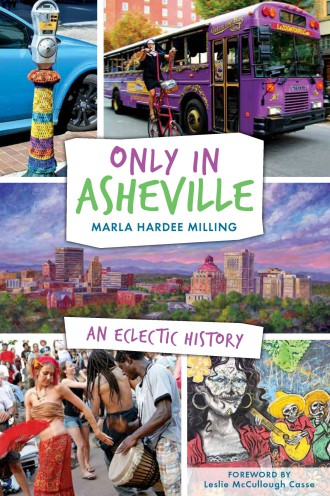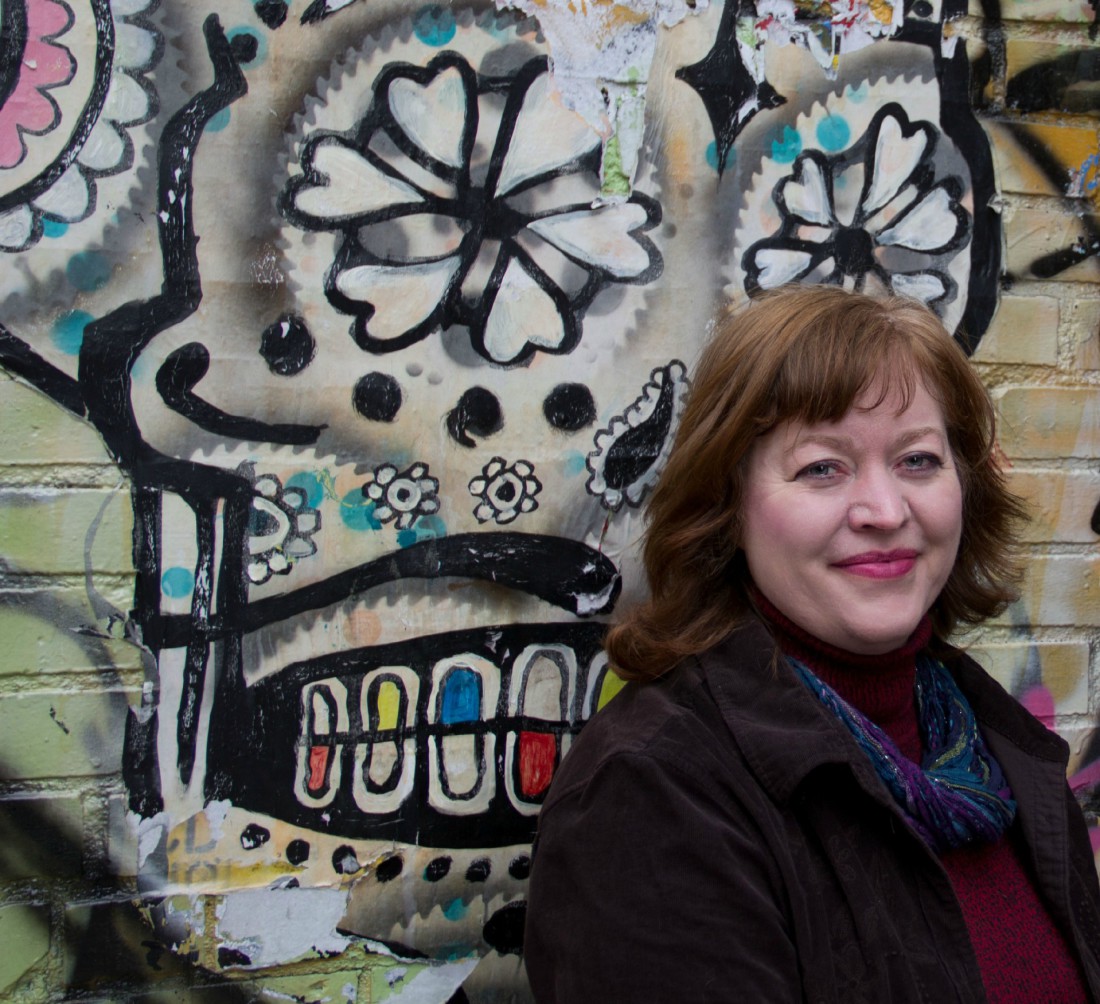Although local journalist Marla Hardee Milling only had 4 1/2 months to write her new book, Only in Asheville: An Eclectic History, she’d already been compiling stories for a lifetime. An Asheville native, Milling says she’s only lived away from the town for 10 months, even electing to go to college at UNC Asheville. “I’d thought of writing a book for years, and all the pieces came together for me last fall,” she says. “It wasn’t like starting on a topic I didn’t know anything about. … I’ve always been part of Asheville.”
The launch for the book took place at The Hop Ice Cream Café, complete with a specialty ice cream flavor: a beet base with a blackberry swirl and French Broad Chocolate chunks. Milling will sign copies of the book at Malaprop’s Bookstore/Café on Wednesday, July 22.
For the project, Milling interviewed more than 40 locals, ranging from craft beer pioneer Oscar Wong and retired UNCA history professor Milton Ready to hairstylist/singer Tiziana Severse and paranormal expert Joshua P. Warren. “When Travel + Leisure named Asheville the quirkiest town in America, that’s when I wrote my book proposal,” she says. “It is quirky and it is weird, but how do you define that? Asheville is really unique, and I wanted to be the one to tell that story.” And, while Milling immediately called to mind LaZoom Tours’ Sister Bad Habit and busker Ralph Longshore, aka The Man in White, she also wanted to include the stories of people who might not wear eye-catching costumes but still pour their hearts into the town. “It was a matter of trying to be representative of people I admire and who are making a positive contribution to Asheville,” she says.
 Only in Asheville does spotlight some lesser-sung heroes, such as the late Julian Price, a philanthropist whose Public Interest Projects, formed with lawyer Pat Whalen, invested in businesses and projects that revitalized downtown. John Cram is another visionary Milling credits with bringing Asheville back from a long period of decline. When he opened Blue Spiral 1 on Biltmore Avenue, “I thought, ‘Wow, something’s going to start happening now,’” the writer says.
Only in Asheville does spotlight some lesser-sung heroes, such as the late Julian Price, a philanthropist whose Public Interest Projects, formed with lawyer Pat Whalen, invested in businesses and projects that revitalized downtown. John Cram is another visionary Milling credits with bringing Asheville back from a long period of decline. When he opened Blue Spiral 1 on Biltmore Avenue, “I thought, ‘Wow, something’s going to start happening now,’” the writer says.
In fact, while Milling professes a nostalgia for the Asheville of the late 1960s, when downtown was populated by department stores such as Ivey’s and Woolworth’s, “I love Asheville the way it is today,” she says. “I like to see change. The time I wouldn’t want to repeat is those ghost-town years when it was all boarded up.”
Milling says that people who haven’t lived in Asheville very long are hard-pressed to imagine the desolation felt in the ’70s and ’80s. “By 1979 … there were more boarded-up storefronts than those operational,” she writes. In the early ’80s, Philadelphia-based developer Strouse Greenberg proposed a plan for a downtown mall that would have meant the demolition of much of Lexington Avenue’s buildings, along with structures on Broadway, Walnut, Haywood and College streets. Even the art deco Kress building would have fallen.
“I was surprised at the magnitude of the mall effort,” Milling says. A college student at the time, she barely remembers it. But her interviews with grassroots organizers Wayne Caldwell, Kathryn Long and Peggy Gardner underscore local passion for the town’s architecture as well as its small businesses. The Save Downtown Asheville group went up against not only City Council, but banks, hospitals and utilities companies. “It’s hard to fight big corporations,” says Milling. Even today, as she learned from Asheville Grown Business Alliance founder Franzi Charen, most local independent businesses don’t own their own buildings, making them vulnerable in the face of future civic planning.
But the story of local commerce is heartening, too. Milling reveals that there were more than 450 Jewish business owners who helped to build the city in the middle of the last century. Historian Jan Schochet, who created 12-panel exhibit “The Family Store: A History of Jewish Businesses, 1880-1990,” will bring the display back to downtown Asheville this summer.
“Today’s Asheville is what has grown organically out of a ghost town,” says Milling. To her, even the edgier aspects of downtown are part of a thriving city — one she’s never stopped loving. “What I wanted to write,” she says, “was something that would give people a little more of the history of how it became what it is today.”
WHO: Marla Hardee Milling presents Only in Asheville
WHERE: Malaprop’s, malaprops.com
WHEN: Wednesday, July 22, 7 p.m. Free.




Hopefully the author of the book did some research (unlike the author of this article) and spelled the Ivey’s Department store name correctly.
Thanks for catching that typo! I hope you enjoy the book — it’s an interesting read.
I notice that the author is pictures posing somewhere in the Carolina Lane/Chicken Alley area… where all the graffiti that gave that area so much character and color has been painted over. Isn’t that the same area where most of the living space has been given over to airbnb rentals as opposed to housing for actual residents of Asheville?